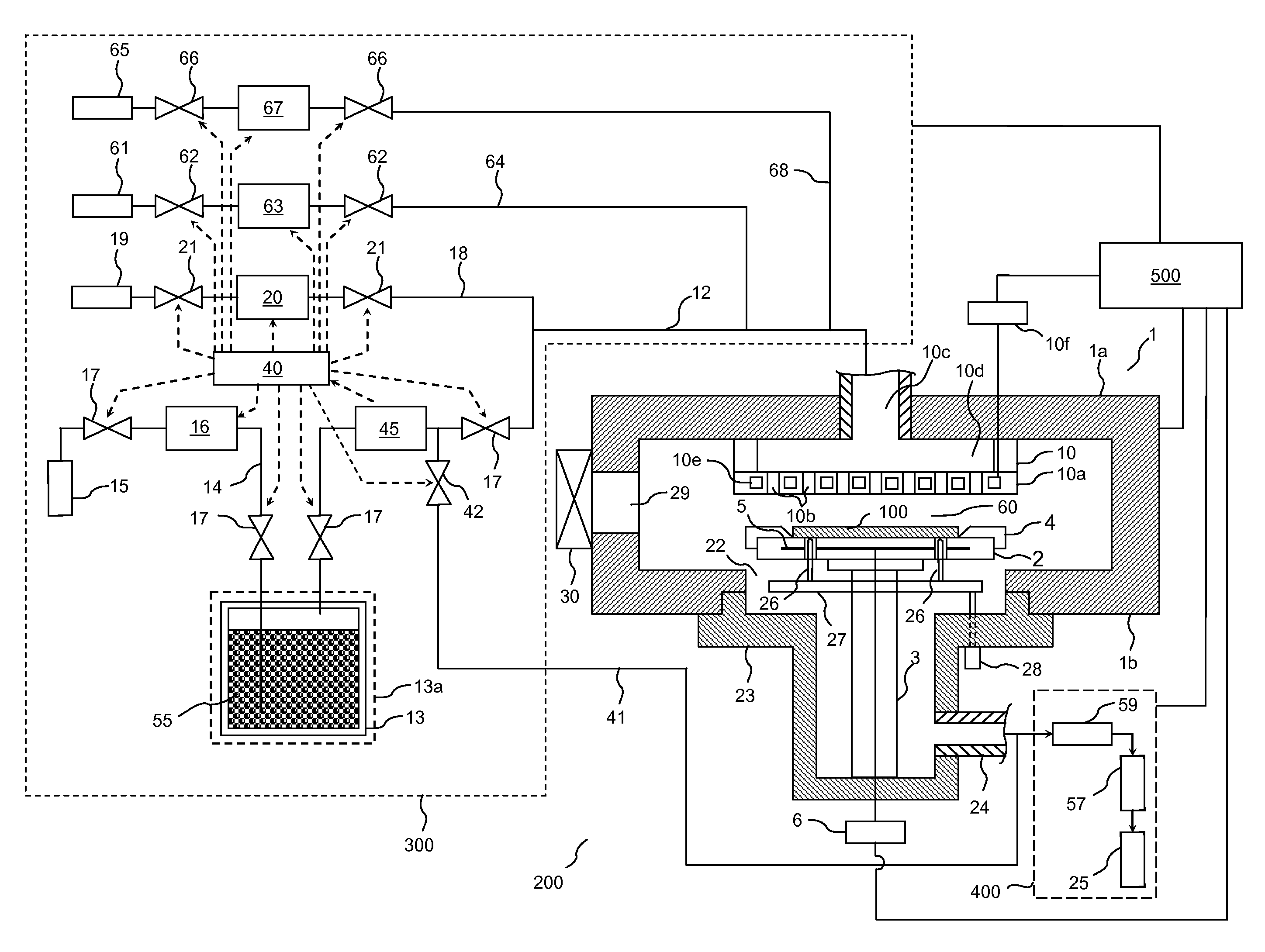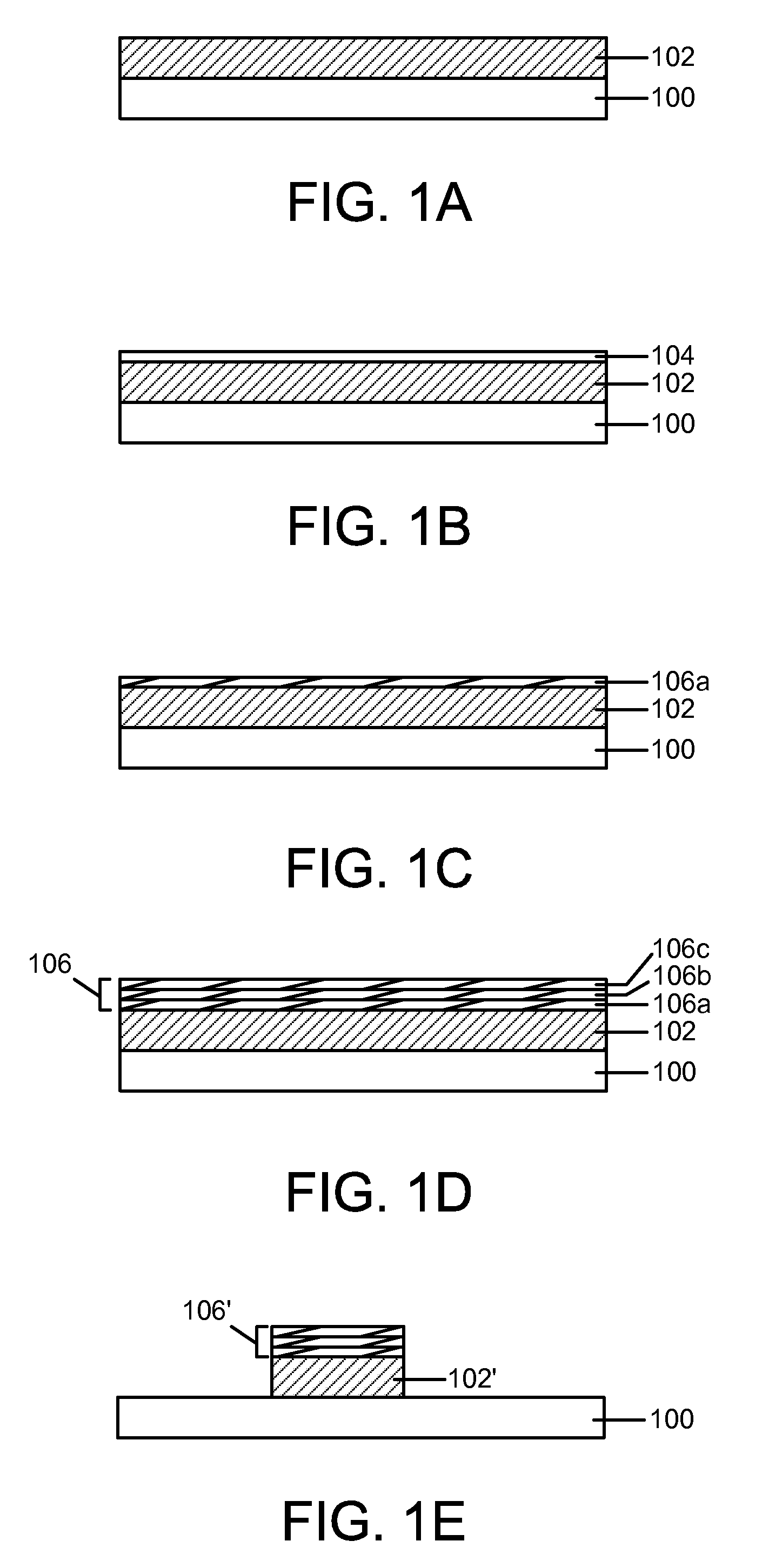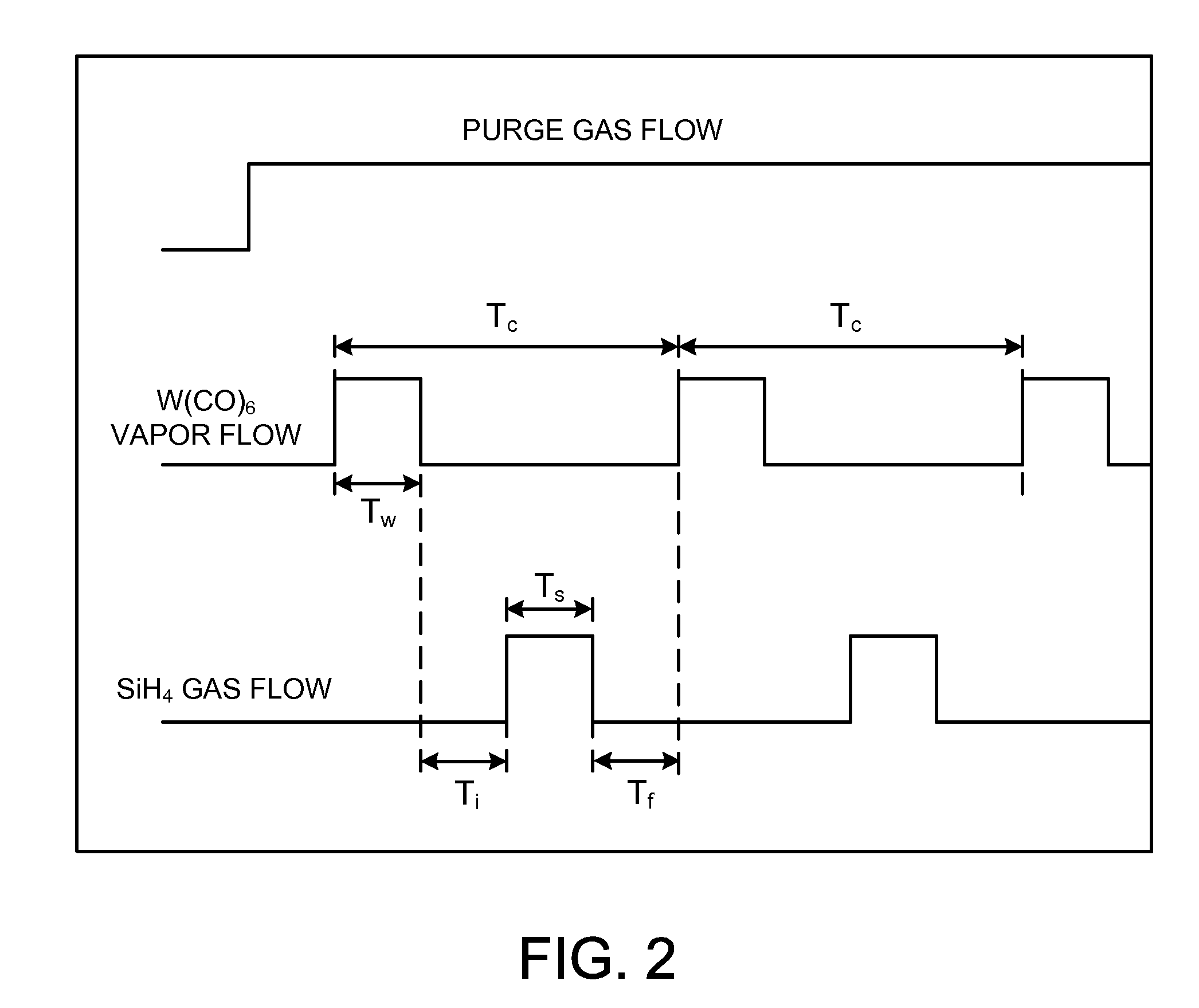Sequential flow deposition of a tungsten silicide gate electrode film
a gate electrode and flow deposition technology, applied in the field of semiconductor device manufacturing, can solve the problems of large device performance limitation, large change in the effective work function of the relative poor electric conductivity of the polysilicon used for the gate electrode in the gate stack, so as to prevent or cause only small increases in the eot of the gate stack during processing
- Summary
- Abstract
- Description
- Claims
- Application Information
AI Technical Summary
Benefits of technology
Problems solved by technology
Method used
Image
Examples
example 1
[0033]A WSix gate electrode film 106 with a Si / W atomic ratio of 0.76 was formed on a high-k film 102 by sequential flow deposition using a first process gas containing W(CO)6 vapor and Ar gas, a second process gas containing undiluted SiH4 gas, continuous flow of Ar purge gas, and substrate temperature of 500° C. A 2 nm thick W metal film 104 was deposited in each deposition cycle using Tw=11 sec, and a gas pressure of 220 mTorr in the process chamber during time periods Tw and Tf. The length of each time period Ts, Ti, and Tf was 12 sec and the gas pressure was maintained at 500 mTorr during time periods Ti and Ts. During time period Ti, the W metal film 104 was exposed to Ar purge gas and SiH4 gas and during time period Ti, the WSix film was exposed to Ar purge gas only. The O film impurity in the WSix gate electrode film 106 was 16.7%.
example 2
[0034]A WSix gate electrode film 106 with a Si / W atomic ratio of 2.6 was formed on a high-k film 102 by sequential flow deposition using a first process gas containing W(CO)6 vapor and Ar gas, a second process gas containing undiluted SiH4 gas, continuous flow of Ar purge gas, and substrate temperature of 500° C. A 1 nm thick W metal film 104 was deposited in each deposition cycle using Tw=5 sec, and a gas pressure of 220 mTorr in the process chamber during time periods Tw and Tf. The length of each time period Ts, Ti, and Tf was 12 sec and the gas pressure was maintained at 500 mTorr during time periods Ti and Ts. During time period Ti, the W metal film 104 was exposed to Ar purge gas and SiH4 gas and during time period Ti, the WSix film was exposed to Ar purge gas only. The O film impurity in the WSix gate electrode film 106 was 2.9%.
example 3
[0035]A WSix gate electrode film 106 with a Si / W atomic ratio estimated at 3.5-4 was formed on a high-k film 102 by sequential flow deposition using a first process gas containing W(CO)6 vapor and Ar gas, a second process gas containing undiluted SiH4 gas, continuous flow of Ar purge gas, and substrate temperature of 500° C. A 0.5 nm thick W metal film 104 was deposited in each deposition cycle using Tw=3 sec, and a gas pressure of 220 mTorr in the process chamber during time periods Tw and Tf. The length of each time period Ts, Ti, and Tf was 12 sec and the gas pressure was maintained at 500 mTorr during time periods Ti and Ts. During time period Ti, the W metal film 104 was exposed to Ar purge gas and SiH4 gas and during time period Ti, the WSix film was exposed to Ar purge gas only. The O film impurity in the WSix gate electrode film 106 was <2.9%.
[0036]As shown in Examples 1-3 above, the Si / W atomic ratio of a WSix gate electrode film 106 was varied from about 0.76 to about 3.5-...
PUM
| Property | Measurement | Unit |
|---|---|---|
| Temperature | aaaaa | aaaaa |
| Temperature | aaaaa | aaaaa |
| Temperature | aaaaa | aaaaa |
Abstract
Description
Claims
Application Information
 Login to View More
Login to View More - R&D
- Intellectual Property
- Life Sciences
- Materials
- Tech Scout
- Unparalleled Data Quality
- Higher Quality Content
- 60% Fewer Hallucinations
Browse by: Latest US Patents, China's latest patents, Technical Efficacy Thesaurus, Application Domain, Technology Topic, Popular Technical Reports.
© 2025 PatSnap. All rights reserved.Legal|Privacy policy|Modern Slavery Act Transparency Statement|Sitemap|About US| Contact US: help@patsnap.com



